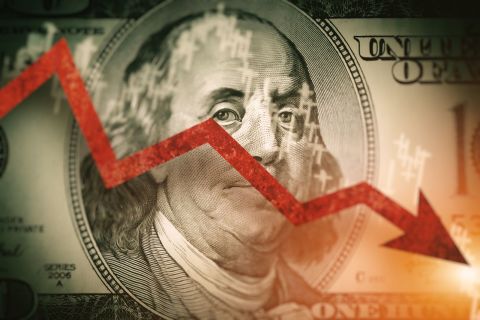Silent EU property crisis could upend global economy
ALBAWABA – With China’s debt-laden property sector on the brink of collapse, a commercial real estate problem brewing in the US, UK housing on the decline and the EU property crisis just getting started, according to Bloomberg, there’s no telling what’s next.
In fact, Saudi Arabia may be the only major economy that is not suffering from a housing crisis. Quite the opposite. The Saudi construction boom has achieved significant housing milestones in recent years.
Back in 2011, Riyadh launched a massive housing program that is aimed at increasing Saudi home ownership to 70 percent by 2030.

Saudi is making significant strides on the housing frontier and is one of the very few major economies in the world not dealing with a property crisis - Shutterstock
According to a PwC report, Saudi Arabia achieved 62 percent Saudi home ownership in 2020.
Japan, on the other hand, does not have a shortage of housing, on paper. But in reality, Japan’s crisis is that of affordable housing, rather than housing stock.
The country’s housing inventory actually outstrips the number of households by 16 percent, yet prices keep going up.
Property crisis UK: Housing prices fell by most in 14 years
In the United Kingdom (UK), rentals soared and sales dipped significantly as UK interest rates rose on the heels of runaway inflation and demand for housing loans fell.
The decline is so steep that UK housing prices took the biggest hit in 14 years, this year.
UK interest rates surged in the wake of the Russo-Ukrainian war, which has sent prices through the roof and accelerated inflation, forcing central banks around the world to hike borrowing costs.
Higher mortgage costs weighed on demand for housing in the UK, as people turned away from buying houses towards leasing them. Meanwhile, a shortage in the supply of houses for rent in vital areas bolstered rental prices.
Property crisis in the US: Unfair distribution of risk
Meanwhile, across the Pacific, US banks are at the forefront of the commercial real estate problem, brewing silently, with medium and regional US banks holding billions worth of commercial property assets.
Demand for commercial property took a dip during the pandemic in the wake of remote work, as countless businesses opted out of leasing or buying office space.
Even as the pandemic receded and restrictions were lifted, the sector still struggles with a stagnant market.
Working from home has cut into the value of office properties and commercial buildings.

The US commercial property crisis stems from the receding demand for and sliding of office buildings - Shutterstock
Meanwhile, a large chunk of commercial property debt is due for repayment before the end of 2025; estimated at a whopping $1.5 trillion, Bloomberg warned back in June.
Notably, much of this is shouldered by smaller US banks. Especially with some commercial property values down 27 percent on average from their recent peak in May. The average commercial property was down 15 percent in June.
Which means that these banks will have lost significant chunks of the initial investments and are now stuck between the rock of holding on to these assets until their prices pick up again and the hard place of selling at a loss to shore up liquidity as the credit crunch intensifies.
Meanwhile, landlords who owe banks for loans they’ve taken out on these properties are also unable to fulfil their payments, due to a significant decline in commercial property lease prices.
Eventually, this could lead to more regional and small US banks going bankrupt and collapsing as a result of a shortage of liquidity.
China’s property crisis: Debt-laden and stuck
China too is grappling with its own sectoral challenges, noting that real estate comprises a huge portion of the economy and of the domestic market.
A collapse in such as sector is doubly risky for an economy like China’s, with export markets drying up and a US trade war that is hurting the Chinese exports.
Despite various stimuli launched by the government to boost China’s economy, including those directed at the real estate sector, developers are still unable to escape the whirlpool of debt and low liquidity. Experts and news agencies describe it as a protracted property crisis.
Evergrande, the second-largest developer in China, defaulted in 2021 and it was then considered the height of the Chinese real estate debt and liquidity crisis, which started in 2020.

China's property crisis is rooted in debt-laden mega developers who are on the verge of defaulting or have already defaulted - Shutterstock
Since then, developers accounting for 40 percent of Chinese home sales have defaulted on their debt obligations, as reported by Reuters.
Late last month, China’s largest developer, Country Garden, missed a dollar coupon payment, and is expected to miss more. Failing to meet the deadlines on these payments means the company may not be able to get the debt restructuring deal it needs to avoid bankruptcy.
Overall, the company has issued around $11 billion in offshore bonds and is missing on just millions worth of payments, as the Chinese debt-laden property sector suffers from a severe liquidity crunch.
Now, Bloomberg is talking about a great housing crisis in the EU.
EU’s Property crisis that’s really political
Mortgages have tripled over the last 16 months in Germany, the Eurozone’s biggest economy.
In an attempt to stimulate the sluggish sector, governments in Europe are starting to cut building permit costs. France and Germany both cut permits by 27 percent and 28 percent, and the UK is expected to drop more than 25 percent on house building permits soon, according to Bloomberg.
Meanwhile, Sweden is also suffering from the worst slump since the 1990s.
Governments are or will soon be falling short on promises to voters. Sweden has a constitutional pledge to provide affordable housing but supply of rental apartments hasn’t kept up with demand for decades.

The Eurozone is struggling to keep up with constitutional and electoral obligations pertaining to affordable housing as a silent property crisis unfolds - Shutterstock
Insufficient supplies have driven up home prices and forced people to live in black-market sublets.
Affordable housing in Germany was one of the key commitments made by Chancellor Olaf Scholz’s ruling coalition when it took power in 2021.
However, Bloomberg’s economists estimate that the government won’t reach its goal of adding 400,000 new homes annually until 2026 at the earliest.
Meanwhile, in the UK, home building has consistently missed the target of 300,000 houses per year set by the ruling Conservative government in 2019.
Tackling the Anglo-Eurozone property crisis
Across all of Europe, and especially in central and western Europe, the squeeze on housing risks widening social divides by forcing people to spend more of their income on accommodation.
More so, attitudes toward migrants could also further deteriorate as they’re increasingly seen as rivals for scarce living space. Bloomberg reported incidents in a town in southern Germany where several dozen tenants were forced to move apartments earlier this year to make room for refugees.

The UK housing crisis is the worst in over 14 years - Shutterstock
Struggles to build enough affordable homes ultimately stem from poor government policy.
As is the case in all welfare-driven economies, housing falls somewhere between a market-driven asset and a regulated public good, which bogs down investment and subjects the sector to volatility.
This, of course, does not apply to luxury homes.
In the UK, about 45,000 residential property builders have shut down in the past five years. In Sweden, 1,145 companies in the construction industry filed for bankruptcy in the first 10 months of 2023, according to Bloomberg.
The value of the global real estate sector is estimated at $326.5 trillion in 2020, as reported by British real estate services company Savills, whose data indicates that residential housing accounts for 79 percent of global real estate value.
What will happen if the housing sectors in four of the world’s biggest economies should collapse?










